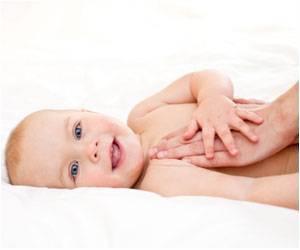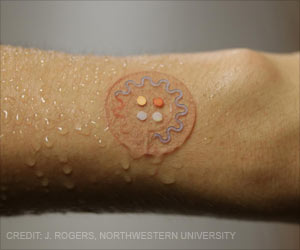Dive into the research uncovering the complexities of S. capitis, a bacteria strain threatening neonates, and the efforts to combat its rising global prevalence.
- Staphylococcus capitis, specifically the NRCS-A strain, poses a significant risk to neonates, causing late-onset sepsis
- Genome sequencing revealed unique genetic markers in disease-causing S. capitis strains, enabling them to thrive on the skin and in the gut
- Introducing 'good bacteria' through probiotics could potentially mitigate the risks posed by NRCS-A, offering hope for vulnerable populations
Late-Onset Sepsis Among Very Preterm Infants
Go to source).
Protecting Premature Neonates from Late-Onset Sepsis
Premature neonates in neonatal care units are extremely sensitive to potentially lethal infections. To help keep these babies safe, the risk of infection must be maintained to a minimum.Late-onset sepsis is a unique issue that begins three days after birth when germs enter the bloodstream and develop. This is extremely risky, and newborns with late-onset sepsis spend more time in the hospital, require more antibiotic therapy, and may have long-term health consequences. One example is Staphylococcus capitis. This is a species that lives on our scalp, face, and neck; capitis means "of the head" in Latin. However, some strains of S. capitis have been linked to late-onset sepsis. One strain, known as NRCS-A, has been linked to serious infections in neonates all over the world.
Scientists believe this strain first appeared in the 1960s and spread throughout the world throughout the 1980s when it developed resistance to the regularly used antibiotic vancomycin. Antibiotic resistance has emerged in circulating strains, as has reduced tolerance to antiseptics used to sterilise baby skin. This makes the bacteria more difficult to cure and manage, but it is unclear why this NRCS-funded study was conducted.
Unlocking the Mysteries of S. capitis to Ensure Neonatal Safety
Professor Mark Webber and his team from the Quadram Institute and the University of East Anglia examined the genomes of hundreds of S. capitis samples to try to understand what causes this strain to spread around the world and to discover better ways to keep it under control. They collaborated with two Neonatal Intensive Care Units (NICUs), one in the United Kingdom and one in Germany, to collect S. capitis samples from the skin and gut of neonatal neonates with and without late-onset sepsis.The researchers discovered that the NRCS-A strain was often harbored on the skin and in the stomach of uninfected neonates, and that transmission between babies within NICUs was likely. Their findings were published in the journal Microbial Genomics.
The researchers were able to find minor genetic changes between S. capitis strains that caused sickness and those that did not by sequencing the entire genome of each sample.
Professor Webber and his colleagues discovered that disease-causing NRCS-A strains possessed a set of specific genes that they believe allow them to live in the stomach as well as on the skin. Cleaning the skin to eliminate the bacteria would be futile since the babies will have a reservoir in their gut microbiomes that cannot be easily removed but can operate as a source of infection.
The genes discovered in the NRCS-A strains make them resistant to nisin, an antibacterial chemical produced naturally by bacteria in the gut. They also carry genes that allow bacteria to withstand exposure to the poisonous metals used by our immune system to kill bacteria, as well as genes that allow bacteria to scavenge critical metals that are known to be difficult for bacteria to acquire in the gut environment.
Harnessing Good Bacteria to Battle Against NRCS-A in NICUs
Further research revealed that bacteria thrive in acidic environments such as those found in the gut. The research suggests that these bacteria have evolved to take advantage of expansion in the gut.If metal scavenging is important for infection, it may also represent the bacteria's Achilles heel, presenting a new strategy to combat it. There is preliminary evidence that giving babies a probiotic supplement containing benign bacteria reduces the likelihood of late-onset sepsis and that these 'good bacteria' can remove metals before S. capitis, inhibiting its proliferation.
"Studying how strains like NRCS-A have become globally successful is crucial to understanding how bacteria evolve to colonise different environments and to give us new ideas about how to reduce the risks of infection in vulnerable populations," said Professor Webber. "We hope this work can be the starting point for more research to develop better ways to protect newborn babies from the terrible consequences of infection."
Dr. Heather Felgate from the Quadram Institute and lead author of the study said, "There are still many questions to answer as to why NRCS-A has become so globally spread amongst NICUs. But, working out how NRCS-A can evade the host immune system, spread and survive can also give us a head start with many other Staphylococcal species that cause sepsis in immunocompromised people in NICU and Intensive care units."
Reference:
- Late-Onset Sepsis Among Very Preterm Infants - (https://pubmed.ncbi.nlm.nih.gov/36366916/)
Source-Medindia
















